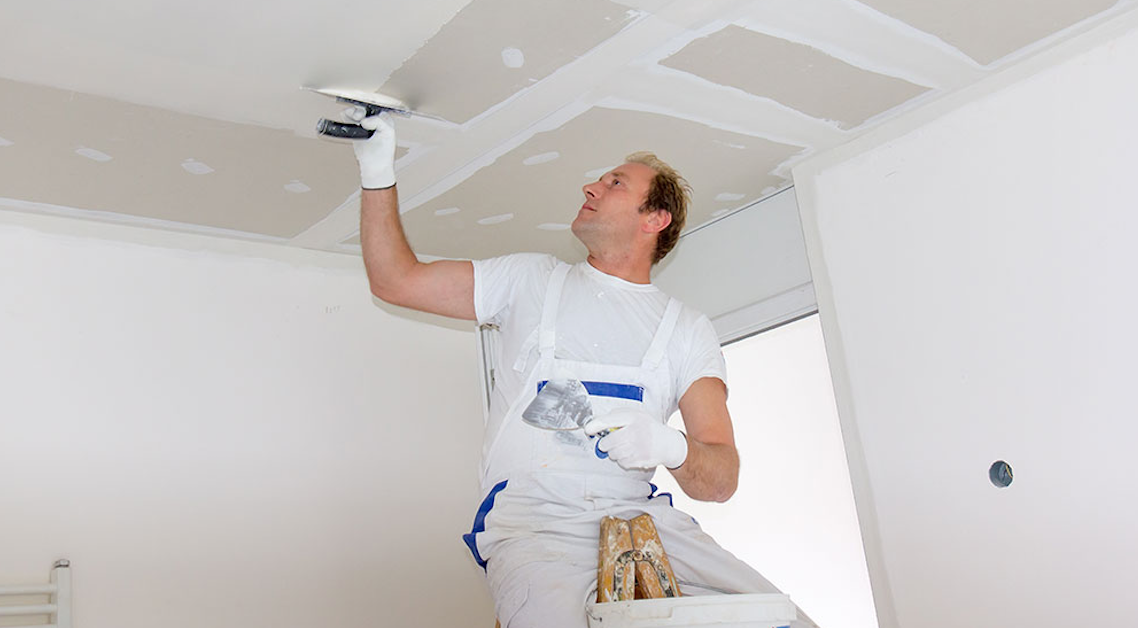Drywall is also known as plasterboard or gypsumboard and is used to build ceilings and walls in the interior. Drywall is made of an underlying gypsum plaster that is sandwiched between two layers of paper fiberglass or paper.
Dents and holes: Drywall is easily damaged by doorknobs, furniture or even accidental impacts.
Damage to the wall: When drywall is exposed water, it can warp, discolor, or become moldy.
The foundation can be moved or settled. This can cause cracks appearing in the drywall.
Aging: Over time the drywall may become soft and show cracks or other signs of wear.
New electrical or plumbing For the installation of new plumbing or electrical, holes may require to be made through the wall.
Drywall repair involves filling in cracks or holes using joint compound, sanding, and painting the surrounding area. Sometimes, drywall sections may have to be completely removed in more severe cases. To improve the appearance of your home it is essential to fix any damage to drywall. Check out the top rated website for drywall calgary contractors for blog advice including drywall repair company near me, drywall specialist near me, drywall repair company, drywall installers in my area, best drywall contractors near me, sheetrock installer near me, drywall services near me, residential drywall contractors, framing and drywall contractors near me, best drywall installers near me and more.

What Happens To Drywall And How Can It Be Fixed?
There are a variety of steps involved in repairing wallboard. They include framing insulation soundproofing, patching, mudding, as well as mudding, taping painting, and tape. The usual process is framing. Here's a brief description of each step. Framing It is possible that the framing needs to be replaced if drywall has been damaged by structural problems.
Insulation: It is possible to add insulation to the wall cavity after framing has been installed. This is especially important for walls that are exterior as well as walls that divide living spaces.
Soundproofing If you want to soundproof then an additional layer of soundproofing material may be added between the framing and the drywall. This will help reduce the transmission of noise within rooms.
Patching: Damaged drywall should be removed once the insulation, framing soundproofing, and soundproofing have been completed. You may need to remove the damaged section, and then replace it with new section.
Taping: Once the new drywall has been installed, tape the joints of the two pieces to create a seamless surface. Apply joint compound along the edges, and then cover the joint with joint tape.
Apply the joint compound after the tape is put on. It will fill in any holes and smooth the surface. To achieve an even surface, you might need to apply several coats of the joint compound. Between each coat, sand it.
Painting: Once the joint compound is dry and the surface has been smoothed, the next step is to paint the drywall to match the surrounding room or wall. It might require several coats of paint to achieve the desired look.
Although repairs to drywall are often time-consuming and tedious, they can be seamless and professional If you are attentive to specifics and employ the right methods.

Here Are Some Tips And Suggestions To Choose A Drywall Contractor
Selecting the right contractor for your drywall is essential to ensure your project is completed on time and within budget, and also to an excellent standard. Here are some tips to assist you in choosing the best drywall company. Refer friends, family members and acquaintances. Recommendations from family and friends are the most reliable way to locate an experienced contractor.
Search online for reviews about local drywall contractors. This will allow you to get an idea of their standing and the quality of their work.
Check credentials: Make sure the contractor you choose to work with is licensed, insured and bondable. This will safeguard you from any damage or accidents during the construction.
Request estimates: Request written estimates from a minimum of three contractors. This will let you determine the range of prices and also identify red flags.
Ask questions: You should not be afraid to ask the contractor questions regarding their methods, processes, and knowledge. A good contractor will answer all of your concerns and provide a detailed explanation of how they operate.
Find out if they have communications skills: Select an expert who responds quickly and communicates well. This will ensure that the project is completed on time and that you are happy with the outcomes.
References Contact references and follow-up. This will provide you with an understanding of the contractor’s work quality, professionalism, and other factors.
By following these tips follow these suggestions, you will be able to locate an experienced drywaller who is reliable, skilled and is a great fit for your project.